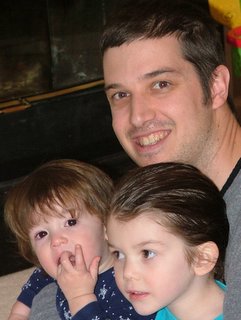Memories From 2001
Susan was hugely pregnant. This from Eric...
Below is a story for Ride On that Ellen and I wrote about Bike DC 2001, which took place right after September 11th. Every year on this date my mind always returns to that terrible morning and the days that followed as we somehow managed, with the help of many of you, to pull off a great ride that hopefully helped the healing process.
WABA
By Eric Gilliland and Ellen Jones
Days passed in silence. Metropolitan Police Department (MPD), the National Park Service, Capitol Hill Police, the Emergency Management Agency were out of touch, understandably occupied in dealing with the recent disasters and the threats of even more. Finally, after 8 days of waiting the call came on September 19. Peter LaPorte, Director of the Office of Emergency Management Agency (EMA) wanted to meet. “Now, more than ever, the mayor wants this ride and we are going to have it. We just need to sit down and figure out how.”
In its original conception, BikeDC would have required the services of over 180 officers from the MPD, Capitol Hill Police and the Park Police, numbers that were not available. Jose Acosta, Commander of the Special Operations Division of the MPD stated flatly, “75 officers. That’s all you’ve got.”
We left the meeting with measured enthusiasm. The responsibility transforming such a large amount of BikeDC planning and still being able to offer something that was a positive experience for thousands of cyclists was sobering. Over the next 5 days the ride was re-invented.
Delivery times and locations changed for equipment and services needed the day of the ride. “If I call the Port-a-John company one more time, they’ll kill me!” moaned Rachel Possel, BikeDC’s event manager.
“No, the NEW site map I just sent you,” Eric Gilliland, Tour Director, was heard to say over and over again as he redeployed 12 variable message sign boards and 2,500 traffic cones and barrels for traffic management on the changed course.
BikeDC media sponsors WTOP and washingtonpost.com took dictation over the phone to make changes in event announcements that were running nonstop to inform as many people as possible about the changes. Dave Weime of Sports Wave, a public relations firm, juggled media contacts, “Pull the spot I just heard about starting at Freedom Plaza – it’s RFK!”
Hundreds of phone calls and emails flooded the WABA office and responding to them was a full time job for Susan Klasmeier, Volunteer Coordinator and Administrative Manager, and a core of volunteers who became the front line for the event. The reaction of cyclists to the new plan was generally positive. A cheer would go up when particularly encouraging messages came in.
Saturday’s activities at then DC Armory were reaffirming. Bicycling Magazine’s Great Gear Exchange drew and enthusiastic crowd and the WABA Kid’s Safety Rodeo was a success. People were happy to be out enjoying the day and thinking about their favorite activity.
Sunday morning dawned clear and warm. At 4 am some of us looked over the vast empty space surrounding RFK Stadium and wondered for the first time, “What if no one comes?” That was the last moment of unstructured thinking for anyone as 400 volunteers began streaming in to set up the event according to a plan that most of them were learning about on the spot.
And the riders came. We estimate that 6,000 people rode on Sunday morning. Over 1000 people registered on the day of the event. The adaptability and resilience of the bicycling community was proven. H.G.Wells statement, “When I see a man riding a bicycle I have hope for civilization,” was never more true.


0 Comments:
Post a Comment
<< Home